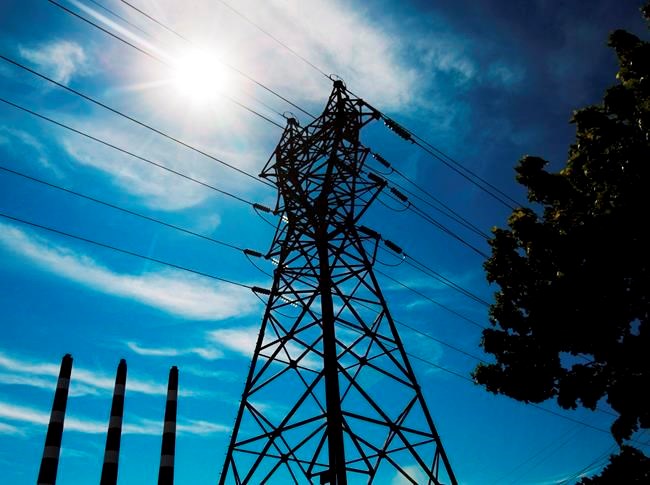HALIFAX — Nova Scotia’s government is attempting to limit a proposed power rate increase sought by the province’s private utility through legislative changes tabled Wednesday.
Nova Scotia Power is currently before the provincial regulator and is asking for a general rate increase of nearly 14 per cent over the next two years.
Natural Resources Minister Tory Rushton said amendments to the Public Utilities Act would prevent the Nova Scotia Utilities and Review Board from approving an increase based on the utility’s costs, with the notable exceptions of fuel costs and those that improve the reliability of the grid.
Rushton pointed out that half of the utilities costs are related to fuel for its coal-fired generating stations, while the other half are related to operations and maintenance.
“We are controlling what we can control by not allowing other costs to be passed on to ratepayers, unless they improve the reliability of the system,” the minister told reporters.
As a result, Rushton said that aside from fuel costs, the rate increase will be limited to 1.8 per cent over the next two years. The government believes such an increase would still leave Nova Scotia Power with as much as $30 million in profit to put toward making the grid more reliable.
However, Rushton conceded that because of rising fuel costs, any final decision by the review board would likely still see a hefty increase for customers that is closer to the utility’s original rate increase application. He noted that global prices for fossil fuels have shot up in recent months.
“It’s an unavoidable cost and it’s well beyond anyone’s control,” Rushton said.
He added that the province gave the utility about $165 million in relief from payments related to its greenhouse gas emissions, but added that the government couldn’t “foot the whole bill.”
Peter Gregg, president of Nova Scotia Power, expressed disappointment at the government’s move on Wednesday, saying it could put its environmental goal of getting his utility off coal by 2030 in jeopardy.
“With this (rate) cap we just simply will not have the funding to move forward on most of those investments,” Gregg said in an interview.
He said having already gone through a two-week hearing before the review board last month, the utility would have preferred that the regulator be left to do its work “in the best interest of customers.”
The utility said that it is forecasting fuel costs for this year alone of $768 million.
Other changes under the legislation would prevent the review board from approving the utility’s request for an increase in its rate of return on equity any higher than 9.25 per cent, while any excess profits above the approved amount will continue to be returned in full to ratepayers.
Liberal environment and climate change critic Iain Rankin applauded the government’s attempt to limit the rate increase to customers but said fuel costs will remain a challenge toward that end.
“That’s why we need to make the transition (to renewable energy) quickly,” said Rankin. “Nova Scotia Power, I think, does own some of that responsibility .… I think that they could have acted quicker.”
NDP critic Susan Leblanc said the legislation provides a “Band-Aid” to people worried about rising energy costs. “The fact is we are going to see increases because of the fuel costs,” Leblanc said. “The government has to look at ways of addressing the fuel costs.”
The review board is expected to make its decision on a rate increase before the end of December.
This report by The Canadian Press was first published Oct. 19, 2022.
Keith Doucette, The Canadian Press



